I have the following MySql table (only 845 rows):
CREATE TABLE `categories_nested_set` (
`lft` int(11) NOT NULL DEFAULT '0',
`rgt` int(11) DEFAULT NULL,
`id` int(11) DEFAULT NULL,
`category` varchar(128) DEFAULT NULL,
PRIMARY KEY (`lft`),
UNIQUE KEY `id` (`id`),
UNIQUE KEY `rgt` (`rgt`),
KEY `idx_lftrgtid` (`id`,`lft`,`rgt`),
KEY `idx_lft` (`lft`),
KEY `i1` (`lft`) USING BTREE,
KEY `i2` (`rgt`) USING BTREE,
KEY `i3` (`id`) USING BTREE,
CONSTRAINT `fk_categories_nested_set_id_category` FOREIGN KEY (`id`) REFERENCES `categories` (`id`) ON DELETE NO ACTION ON UPDATE NO ACTION
) ENGINE=InnoDB DEFAULT CHARSET=utf8;
(you can see I have a whole lot of indexes in there, just in case).
I perform the following self-join query:
SELECT *
FROM categories_nested_set AS H
LEFT JOIN categories_nested_set AS I ON (H.lft > I.lft)
Which generates the following EXPLAIN:
id,select_type,table,type,possible_keys,key,key_len,ref,rows,Extra
1,SIMPLE,H,ALL,NULL,NULL,NULL,NULL,845,NULL
1,SIMPLE,I,ALL,"PRIMARY,idx_lft,i1",NULL,NULL,NULL,845,"Range checked for each record (index map: 0x31)"
The EXPLAIN would suggest that MySql is choosing not to use an index, and I cannot understand why. The table definition shows that all the relevant columns are indexed.
In the scope of a far-larger query (5 million rows, 14x tables) this piece is proving to be a massive bottleneck. Any advice would be appreciated.
Thanks,
